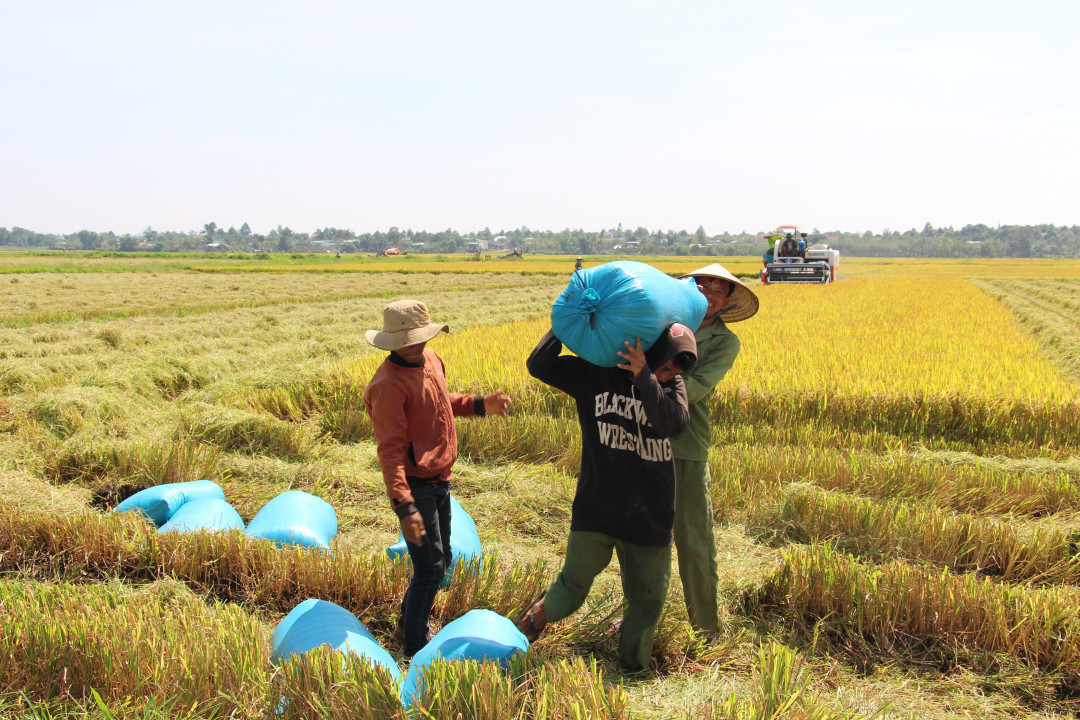
Honored as an excellent farmer in An Giang province, Le Thanh Long has 80 hectares of land for agricultural production, which brings revenue of VND8.91 billion and profit of VND5 billion a year.
Long said the 1 million hectare low-carbon rice cultivation project mentioned at the 2024 Farmers’ Forum held recently days ago helps rice farmers access a safe, environment-friendly and effective production method and have higher incomes.
The initial results of the pilot low-carbon rice farming models have made farmers like him feel proud and want to participate in the project. He hopes that MARD and Vietnam Farmers’ Association will launch a program to help farmers grow low-emission rice and sell carbon credits.
Ho Ba Phieu, a farmer in Can Tho City, said farmers want to feel secure in organizing production and ensuring food security, and they hope MARD will create most favorable conditions for large-scale cultivation for farmers to participate in the low-emission rice farming program.
“I want to participate in the 1 million hectare project,” Phieu said.
Minister of Agriculture and Rural Development Le Minh Hoan said that farmers will be the force that re-positions agriculture by applying new production models.
Hoan, who has visited many localities, from delta to coastal areas, noted that farmers have new creative models, shifting from traditional production to circular agriculture, clean agriculture, low-emission agriculture or natural multi-value agriculture (rice-fish, rice-clam worm- fiddler crab farming)
The 1 million hectare high-quality low-emission rice project aims to open up an agricultural economy that reduces emissions and adapts to climate change. From the 1 million hectares of rice grown in the Mekong Delta, the model will be applied throughout the country.
In the future, the low-emission cultivation model will also be applied to other crops, and in livestock and aquaculture as well.
Currently, in the agricultural sector, only forestry absorbs carbon, while other production fields produce emissions. So, the task that needs to be implemented is to help forestry better absorb carbon, and other sectors reduce more carbon emissions.
The project also re-organizes Vietnam’s rice production process so that farmers can spend less to earn more.
Under the project, farmers are given guidance on how to use less input materials and get more output – improving the quality of rice, re-using straw waste, and creating a non-rice grain economy.
Hoan said that Vietnam will re-organize farmers and the economy by forming cooperatives and cooperative units.
Tam An